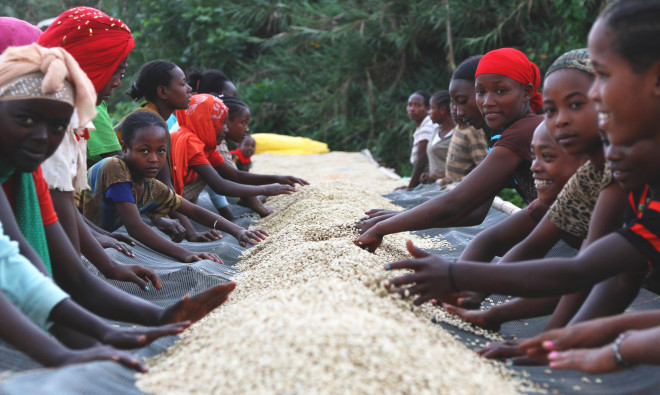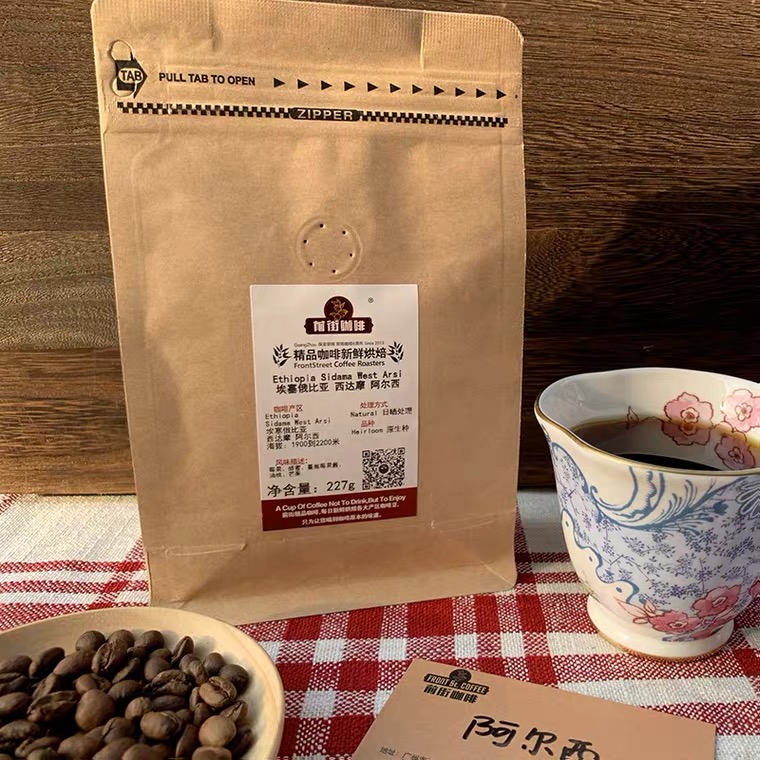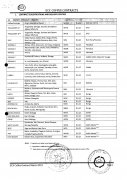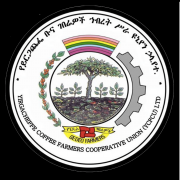The six modes of growing coffee in Ethiopia introduce in detail the flavor of Arsi sun-dried coffee beans.
At present, about 25% of the Ethiopian population directly or indirectly depends on coffee production for a living. The majority of farmers use traditional planting methods. Artificial care of coffee trees, the use of organic fertilizers, do not use harmful pesticides and herbicides, etc. Therefore, most of the coffee produced by Ethiopia is organic coffee.

Ethiopia's planting patterns are complex, ranging from wild coffee in pristine forests to all-day sunshine in sharp contrast. The planting system is diversified all over the world. People usually distinguish two major growing environments according to the degree of shade of coffee: the first is the forest environment with shade trees (full or semi-shaded), and the second is growing directly in full sunshine (such as Hara). There are six planting patterns on the basis of the two environments.
1. Forest shade coffee. Divided into forest growth or semi-shade, the former belongs to full shade, specially selected sites for artificial planting or traditional wild coffee trees. Wild coffee trees are usually uncared for and grow naturally in the forests of the mountainous areas. after the fruit is ripe, nearby residents come to harvest and subsidize their families. If planted in an environment close to the forest, shade trees planted around coffee trees are usually fruit trees of economic value that can be taken out or used for their own use. There are few forests around the semi-shaded environment, and people will not only grow some coffee trees, but also sort out the surrounding weeds and do basic management to achieve the purpose of increasing yield.
Second, all-day coffee. There is no forest or shade tree around the coffee tree. Rizhao coffee is usually grown in a small amount in the garden, located at a high altitude of 1700 20000 meters, especially in the Hara area.
Third, grow coffee in the garden. As its name implies, this kind of coffee tree is planted close to home, usually only 100 per household, and mostly mixed with other harvested crops. The harvested crops and coffee fruits can be used for their own use or sent to the market to subsidize their income. Semi-shade or full-day sun.
Fourth, agroforestry system. Most of them cover an area of 1 hectare, with local traditional trees or fruit trees as shade trees, planted in shade or semi-shade ways. Most of them are professional coffee farmers, especially Sidamo and Yegashifi.
Coffee farm / plot. Private (or enterprise)-owned exclusive estates or production blocks, approved by the government, have direct sales permits, usually covering an area of more than 10 hectares.
VI. Large plantations. The planting area is more than 50 hectares.
Arsi Coffee in Qianjie Coffee adopts the mode of small farmers, and the average farm of each small farmer is not large, about 2-3 hectares. Although coffee planting technology is still developing, compared with other producing areas, the coffee planting technology in West Alxi is developing rapidly. Coffee farmers do not need to hire temporary or full-time workers, but choose coffee with the help of their families.
West Alsi is located between the famous Yega Chuefei Coffee Plantation and Halergai, in the eastern part of the Sidamo region, between 1900 and 2200 above sea level, high altitude plus fertile soil, coupled with green traditional organic cultivation, the coffee is produced with tropical fruit flavor and excellent sweetness.
Arsi of Qianjie coffee uses medium-shallow baking degree and sun treatment, showing rich flavor of berries, honey, nectarines and layers of wind.

Important Notice :
前街咖啡 FrontStreet Coffee has moved to new addredd:
FrontStreet Coffee Address: 315,Donghua East Road,GuangZhou
Tel:020 38364473
- Prev

The influence of Ethiopian Commodity Exchange on Coffee Market characteristics of flavor and taste of Huakui coffee beans
Coffee crops are the main source of foreign exchange in Ethiopia. It is the main export commodity to earn valuable foreign exchange for the country. However, coffee also has a vibrant domestic market.
- Next

Yega Xuefei Coffee Farmers Cooperative Union YCFCU | Fruit Tintin, Waka Cooperative Bean Flavor and Taste characteristics
Yega Xuefei Coffee Farmers Cooperative Union YCFCU | Fruit Ding
Related
- Detailed explanation of Jadeite planting Land in Panamanian Jadeite Manor introduction to the grading system of Jadeite competitive bidding, Red bid, Green bid and Rose Summer
- Story of Coffee planting in Brenka region of Costa Rica Stonehenge Manor anaerobic heavy honey treatment of flavor mouth
- What's on the barrel of Blue Mountain Coffee beans?
- Can American coffee also pull flowers? How to use hot American style to pull out a good-looking pattern?
- Can you make a cold extract with coffee beans? What is the right proportion for cold-extracted coffee formula?
- Indonesian PWN Gold Mandrine Coffee Origin Features Flavor How to Chong? Mandolin coffee is American.
- A brief introduction to the flavor characteristics of Brazilian yellow bourbon coffee beans
- What is the effect of different water quality on the flavor of cold-extracted coffee? What kind of water is best for brewing coffee?
- Why do you think of Rose Summer whenever you mention Panamanian coffee?
- Introduction to the characteristics of authentic blue mountain coffee bean producing areas? What is the CIB Coffee Authority in Jamaica?

